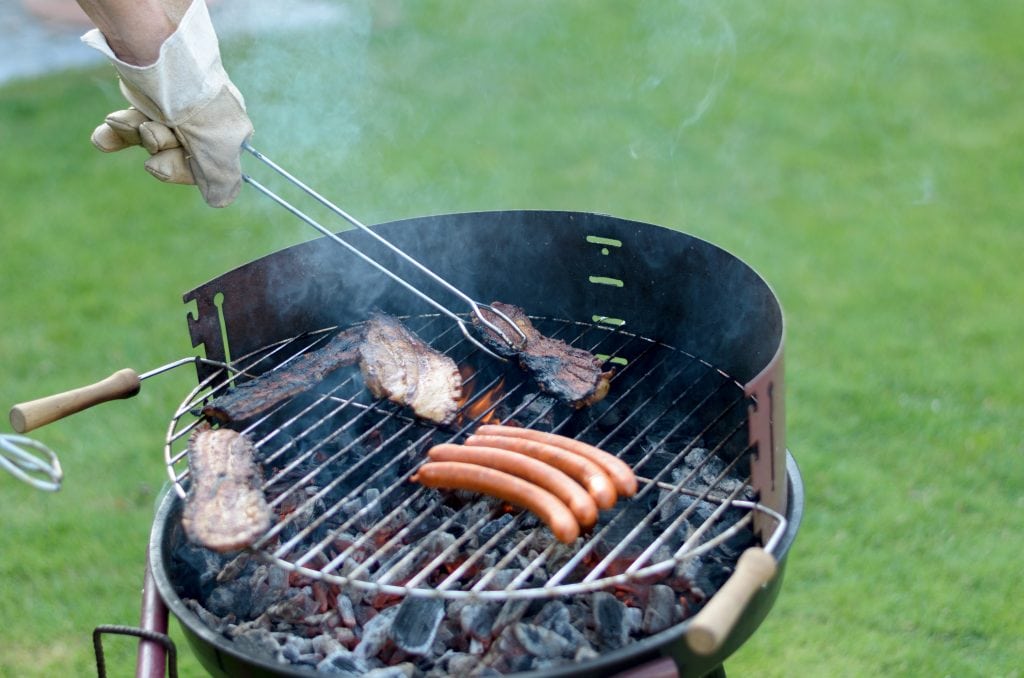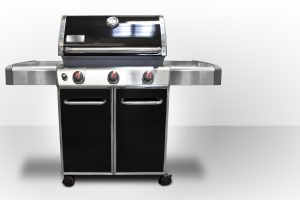Charcoal grilling is a fantastic way to add that extra flavour to your BBQ. Follow these 13 Tips On How To Charcoal Grill at Home!
Ready to take your grilling skills from beginner to cook-off winner?
Sure, a gas grill gets things heated up quickly. But there’s something about the smoky flavor you can only get with charcoal that makes your summer barbecues a hit. Charcoal grills give your favorite burgers, steaks, and chicken those drool-worthy sear lines.
Don’t let the flames scare you. Learning how to charcoal grill is something anyone can do with the right tips.
Keep reading our charcoal grill guide to make your grilling skills the envy of the neighborhood.

Table of Contents
1. Prep the Grill
Before you throw charcoal in your grill, set it up for success. Charcoal grills have dampers along the bottom. You want those open to start with the lid also open to feed the fire oxygen.
Remove the cooking grate for now. Put it somewhere out of the way where it won’t get dirty.
2. Light the Charcoal
When lighting your charcoal grill, it’s easiest to use a charcoal chimney. This cylindrical tool lets you light the charcoal without lighter fluid. That eliminates the potential chemical taste you get if the fluid doesn’t burn off before you start grilling.
Start with crumpled newspaper in the bottom. Then, top it with your charcoal. The charcoal lights and burns like normal.
If you don’t have a charcoal chimney, pile your charcoal in a pyramid shape. Soak the charcoal with about 1.6 ounces of fluid for every pound of charcoal. Wait about 30 seconds before lighting the charcoal.
When all the charcoal has a white surface, spread it out in the grill. Put the lid in place and wait five more minutes before cooking the food.
3. Have the Food Ready
When your coals reach the perfect point, you want to get the food on quickly. By prepping your food early, you don’t waste any of that perfect heat.
If you’re grilling steak, pork, or other whole pieces of meat, trim the excess fat that you don’t want to leave on while cooking. Add any seasonings or marinades to the meat. Marinating meat for at least 30 minutes lets the flavors soak into the meat.
Calculate the cooking times if you’re grilling more than one thing. Burgers need more time than hot dogs. Thick steaks need more time than thin slices of veggies.
Use those cooking times to plan when to put each item onto the grill. Consider side dishes you’re cooking inside to coordinate the finishing time for everything.
Organizing your condiments and side dishes early lets you focus on the grilling once you start. It’s easy for food to go from perfect to burnt on the grill. Being able to focus on the grill helps prevent that.
4. Add Smoky Flavor
Cooking on charcoal grills naturally gives food more flavor that you don’t get on a gas grill. Add even more flavor with wood chips.
Pick the variety of wood based on the flavor you want to add. Here are some options:
- Applewood or cherry for a touch of sweet, fruity flavor
- Mesquite for a strong tangy, earthy flavor
- Hickory for a hint of bacon flavor
- Maple for a slightly sweet, smoky flavor
Combine different wood varieties for custom flavors.
Put the chips in water to soak for about two hours before grilling. Toss them in with the coals after they turn white to infuse the meat with the flavor.
5. Cook in Zones
When you grill, you can use direct or indirect heat. Direct heat means you cook the food directly over the coals where it’s hottest. Think of it as the high heat setting on a gas grill.
Indirect heat means moving the food away from the coals so they don’t receive as much heat. Depending on the placement, it’s equivalent to the low or medium heat settings on a gas grill.
Foods that cook quickly, such as burgers, thin steaks, hot dogs, and chicken breasts, work best over direct heat. They can handle the heat for longer.
Larger items, such as ribs, whole chickens, and thicker meat, do better under indirect heat. They need longer to cook completely. By using indirect heat, you give them more time to cook without the outside getting burned.
Another option is to start food over direct heat to get a noticeable char on the outside. Then, move it away from the direct heat to let it finish cooking.
If you’re cooking different types of foods, set up zones for both direct and indirect cooking. Center most of the coals in one area for direct heat. Position other foods away from those coals to cook them indirectly.
6. Prep the Grate
You can already taste the delicious grilled meal you’re about to enjoy. You naturally want to start cooking as soon as possible. But putting food on too soon can cause sticking.
Place the cooking grate over the hot coals after you spread them. Let the grate get hot before you start cooking.
Greasing the grate also prevents sticking. Dip a wadded paper towel in a little oil. Use tongs to rub it on the grate.
7. Adjust the Vents
You can’t adjust the temperature of a charcoal grill with a knob like you can on a gas grill. Instead, the vents built into the grill help you control how the food cooks. Look for the vents on the top and bottom of the kettle.
Opening the vents helps release heat from inside the grill. If the food cooks to fast, open the vents more carefully. Use a grill tool or something else to help you adjust the vents once you start the grill to avoid burns.
At the same time, close the vents at the bottom. That cuts down on oxygen flow to the coals, which limits the heat. If you leave the bottom vents closed for too long, it can extinguish the fire completely.
If you need more heat in the grill to cook food properly, reverse the process. Open the bottom vents to get more oxygen to the coals and shut the top vents.
8. Watch for Flare-Ups
Grease from meat sometimes causes flames to flare up in the grill. The flames can burn the food so you want to tame them quickly.
Putting the lid on the grill suffocates the flames. Close the vents to smother the flames.
Don’t pour water on the flames. It can cause ash to splash up on your food. Water also makes grease fire flames flare up even more.
9. Keep the Lid in Place
It’s tempting to peek at your meat and veggies as they grill. But each time you lift the lid, oxygen fuels the coals. That makes them hotter and can result in burnt food.
It’s exactly the other way round with gas grills. Here, peeking lowers the heat inside the grill.
Limit how often you take the lid off your charcoal grill. Only remove it to quickly flip the food and check it occasionally.
If you can’t keep your hands off, set a timer based on what you’re cooking. A burger is good for four to five minutes per side before you flip. Wait until the timer rings to take off the lid.
10. Use an Instant-Read Thermometer
The last thing you want at your backyard barbecue is undercooked meat. Instead of eyeballing doneness or relying on the clock, use a reliable meat thermometer to decide when to remove food. The time can vary on a charcoal grill because of differences in temperature.
An instant-read thermometer gives you a quick readout of the internal temperature. The ideal temperature varies depending on the type of meat. Common internal temperature recommendations include:
- Chicken: 165 degrees Fahrenheit
- Burgers: 160 degrees Fahrenheit
- Steak: 145 degrees Fahrenheit
- Fresh pork: 145 degrees Fahrenheit
- Fish: 145 degrees Fahrenheit
11. Follow Grill Safety
Safety is important no matter what type of grill you use. Take extra care with charcoal grills.
They tend to be a little less stable than gas grills. Place your charcoal grill on level ground away from structures. Choose an out-of-the-way spot so it doesn’t get knocked over.
Never leave your charcoal grill unattended, especially when it’s still flaming. Keep a fire extinguisher on hand in case your flames get out of control.
12. Shut Down the Grill
You want to enjoy your grilled masterpiece, but don’t forget to shut down the grill for the night. Shutting the vents cuts off oxygen to help the coals burn out. It takes a while for a charcoal grill and the coals to cool completely.
Don’t extinguish the coals with water. It can create steam, which can burn you. It can also cause damage to your grill because of the sudden temperature drop.
You don’t have to remove the ashes from your grill. Your fresh charcoal can go right on top the next time you grill.
If you clean out the ashes, wait until they’re completely cool.
13. Clean the Grill
Cleaning the grates of your charcoal grill reduces buildup and helps your food taste better. It can also prevent grease fires from happening.
A wire brush knocks off the gunk off the grates easily. Another option is a ball of aluminum foil.
At least once a season, do a deep clean on the grill interior. Wipe off any gunk that builds up on the sides, lid, and bottom of the grill.
Learn More About How to Charcoal Grill
Now that you know how to charcoal grill, what are you waiting for? Pull out that charcoal grill, make up your favorite burger recipe, and start grilling. Read more of our best grilling tips, including grilling safety tips, to make your next cookout a success.








Pingback: Gas Grills vs Pellet Grills vs Charcoal Grills: Key Features to Consider